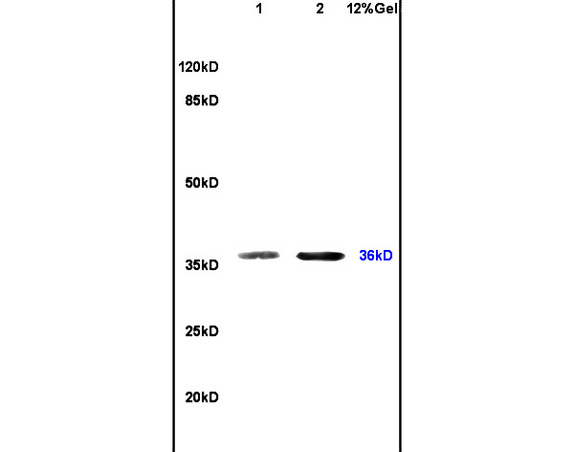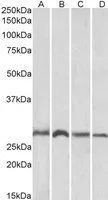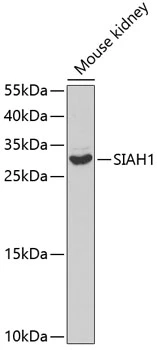SIAH1 antibody
GTX113268
ApplicationsWestern Blot, ImmunoHistoChemistry, ImmunoHistoChemistry Paraffin, Other Application
Product group Antibodies
ReactivityHuman
TargetSIAH1
Overview
- SupplierGeneTex
- Product NameSIAH1 antibody
- Delivery Days Customer9
- Application Supplier NoteWB: 1:500-1:3000. IHC-P: 1:100-1:1000. *Optimal dilutions/concentrations should be determined by the researcher.Not tested in other applications.
- ApplicationsWestern Blot, ImmunoHistoChemistry, ImmunoHistoChemistry Paraffin, Other Application
- CertificationResearch Use Only
- ClonalityPolyclonal
- Concentration1 mg/ml
- ConjugateUnconjugated
- Gene ID6477
- Target nameSIAH1
- Target descriptionsiah E3 ubiquitin protein ligase 1
- Target synonymsBURHAS, SIAH1A, E3 ubiquitin-protein ligase SIAH1, RING-type E3 ubiquitin transferase SIAH1, seven in absentia homolog 1, siah-1a
- HostRabbit
- IsotypeIgG
- Protein IDQ8IUQ4
- Protein NameE3 ubiquitin-protein ligase SIAH1
- Scientific DescriptionThis gene encodes a protein that is a member of the seven in absentia homolog (SIAH) family. The protein is an E3 ligase and is involved in ubiquitination and proteasome-mediated degradation of specific proteins. The activity of this ubiquitin ligase has been implicated in the development of certain forms of Parkinsons disease, the regulation of the cellular response to hypoxia and induction of apoptosis. Alternative splicing results in several additional transcript variants, some encoding different isoforms and others that have not been fully characterized. [provided by RefSeq]
- ReactivityHuman
- Storage Instruction-20°C or -80°C,2°C to 8°C
- UNSPSC12352203
References
- Srivastava A, Tommasi C, Sessions D, et al. MAB21L4 Deficiency Drives Squamous Cell Carcinoma via Activation of RET. Cancer Res. 2022,82(17):3143-3157. doi: 10.1158/0008-5472.CAN-22-0047Read this paper







